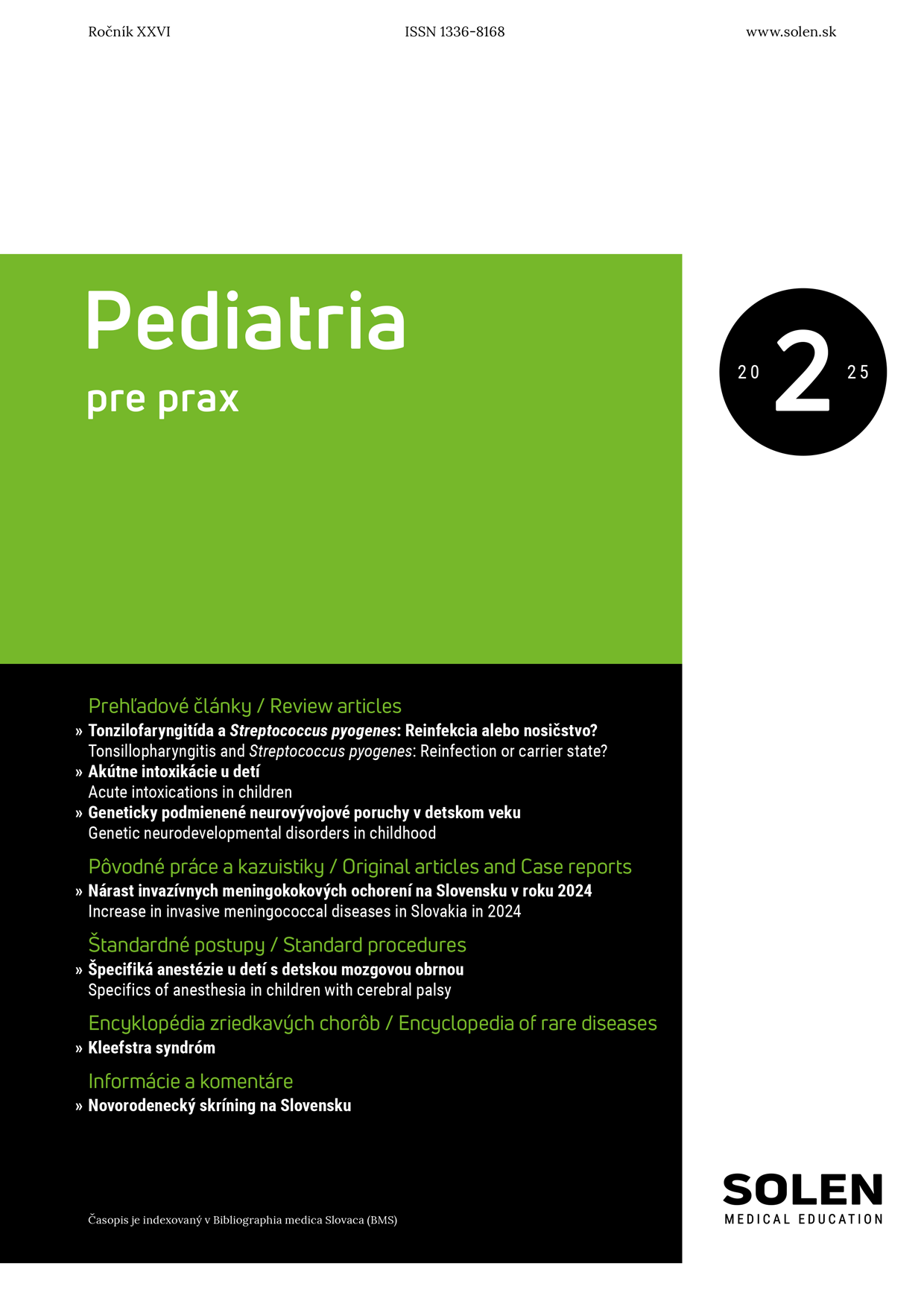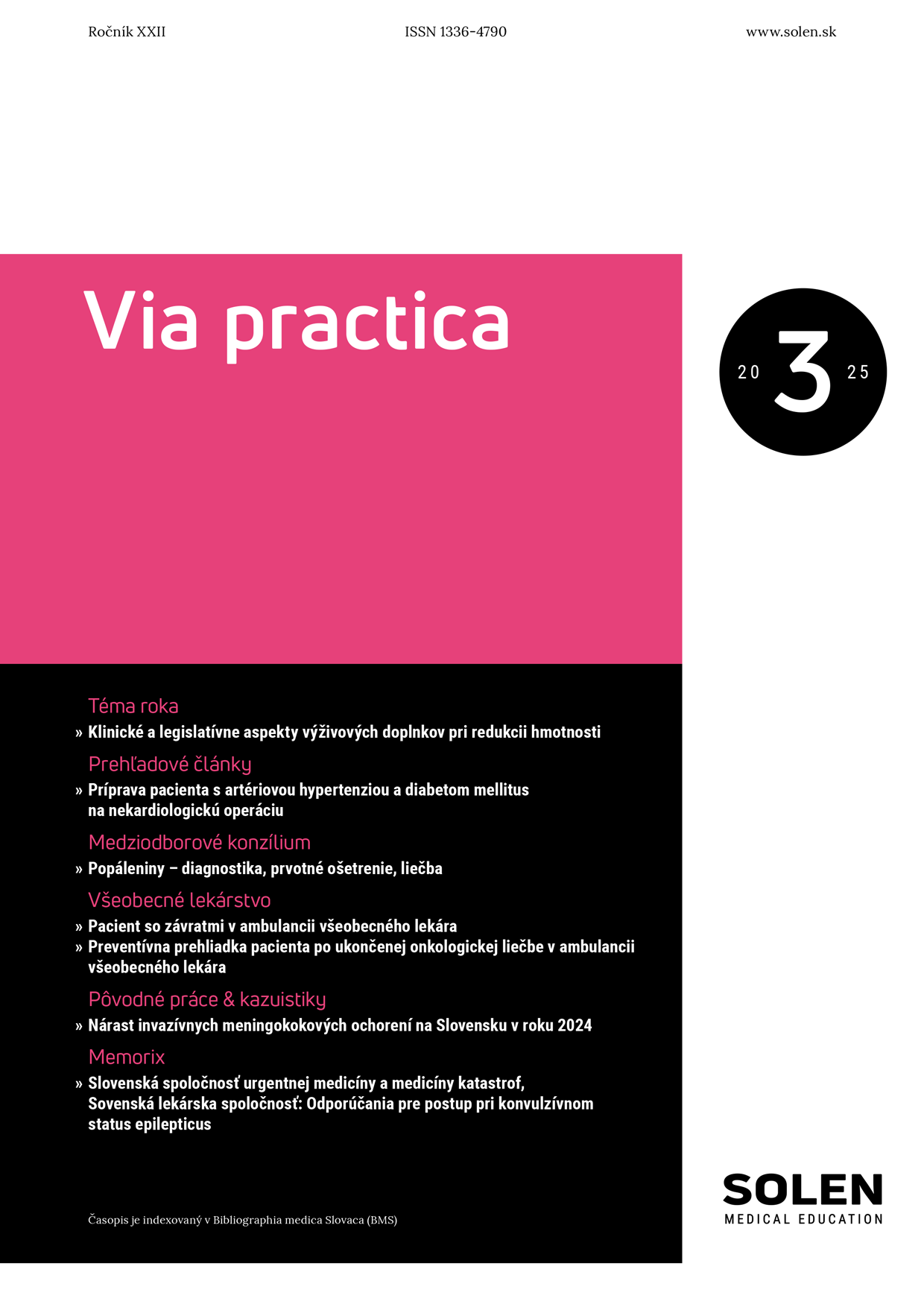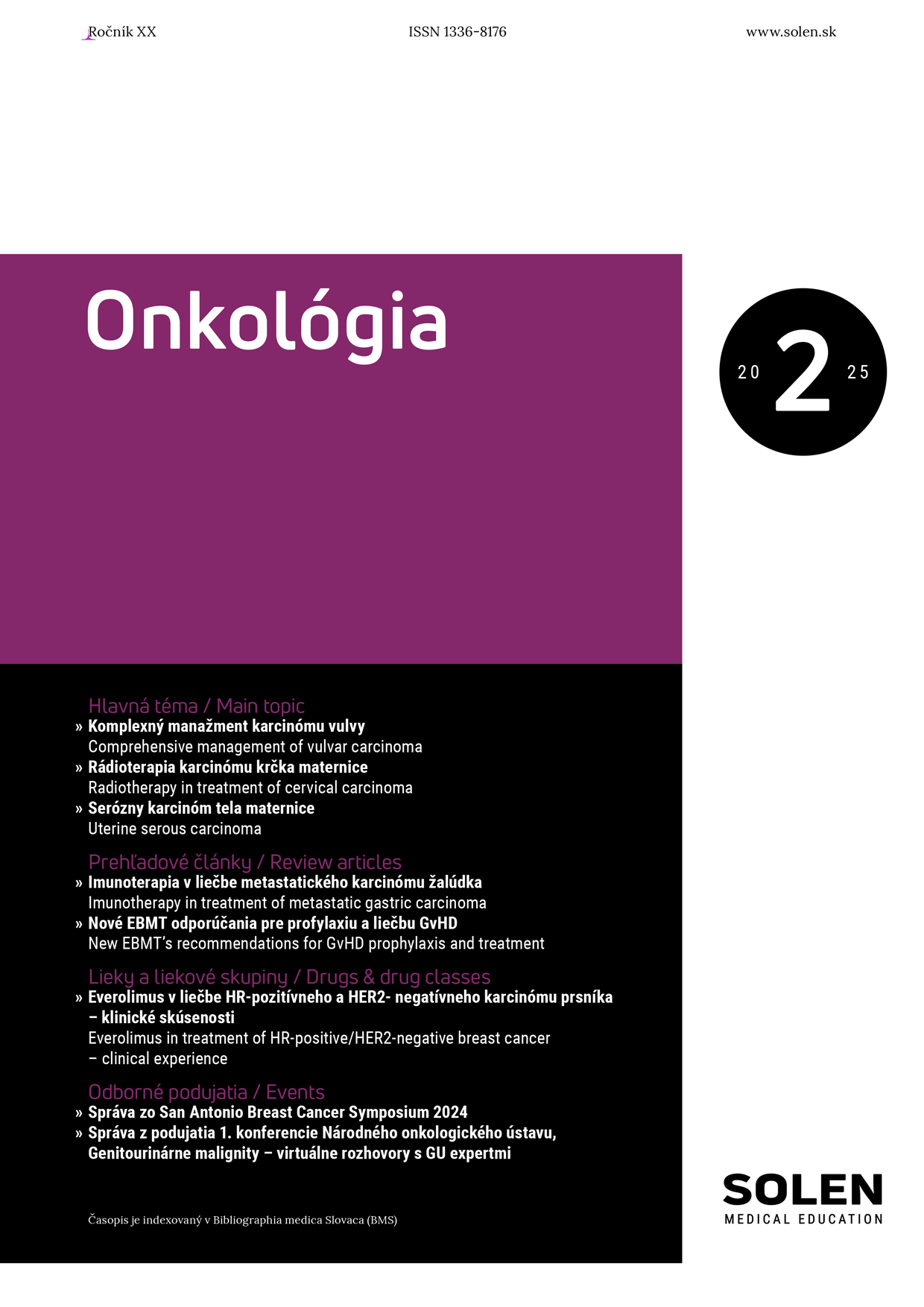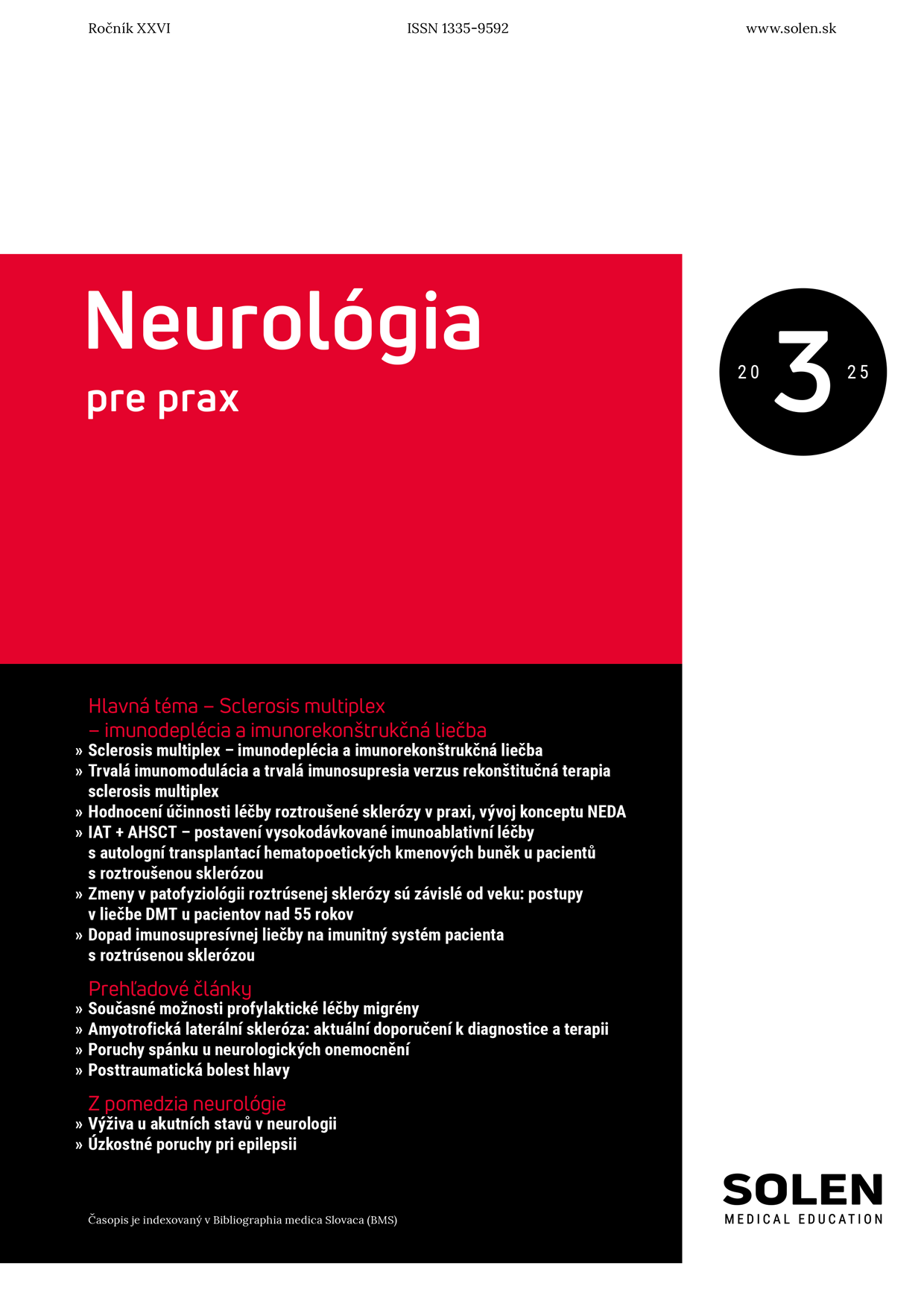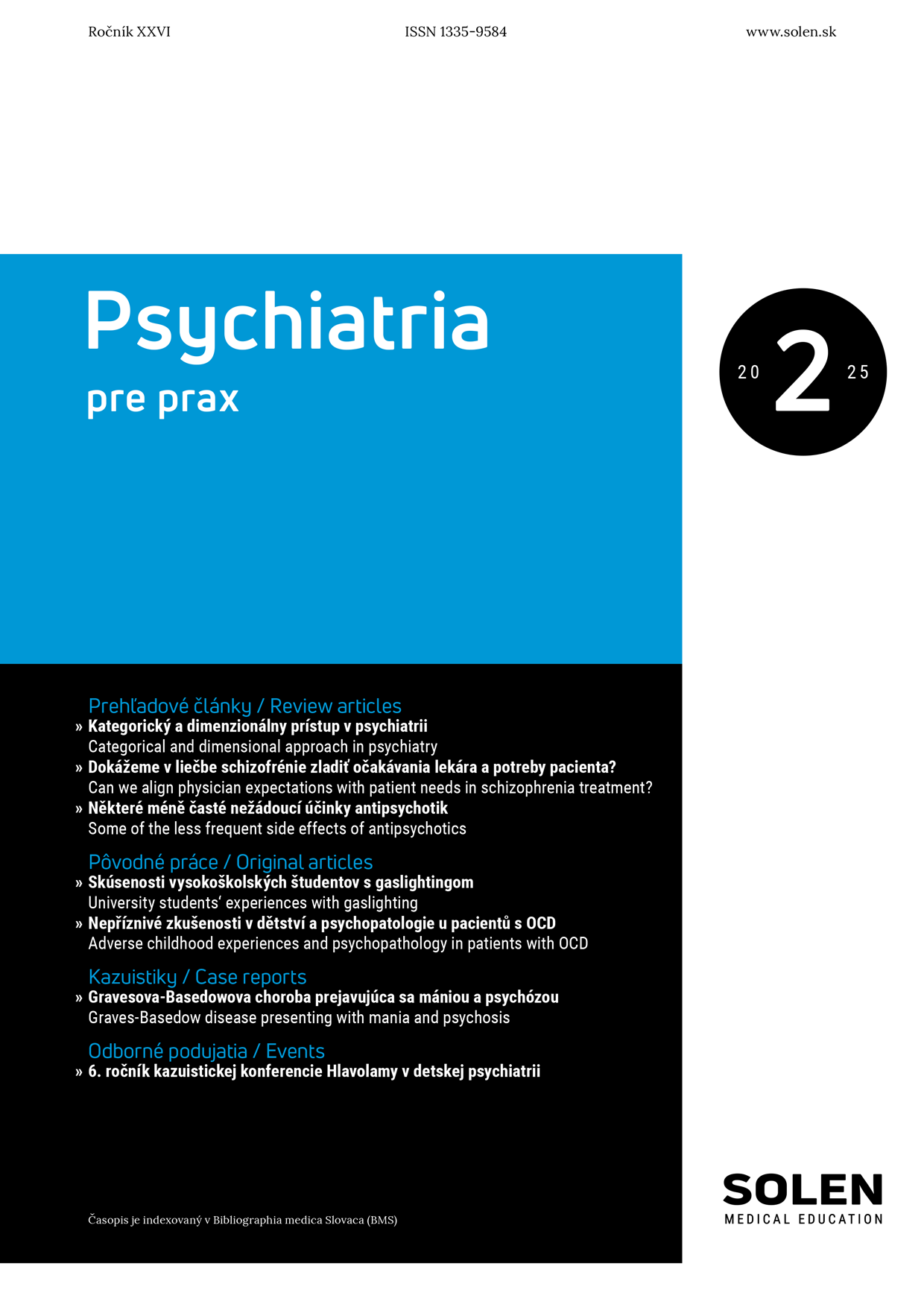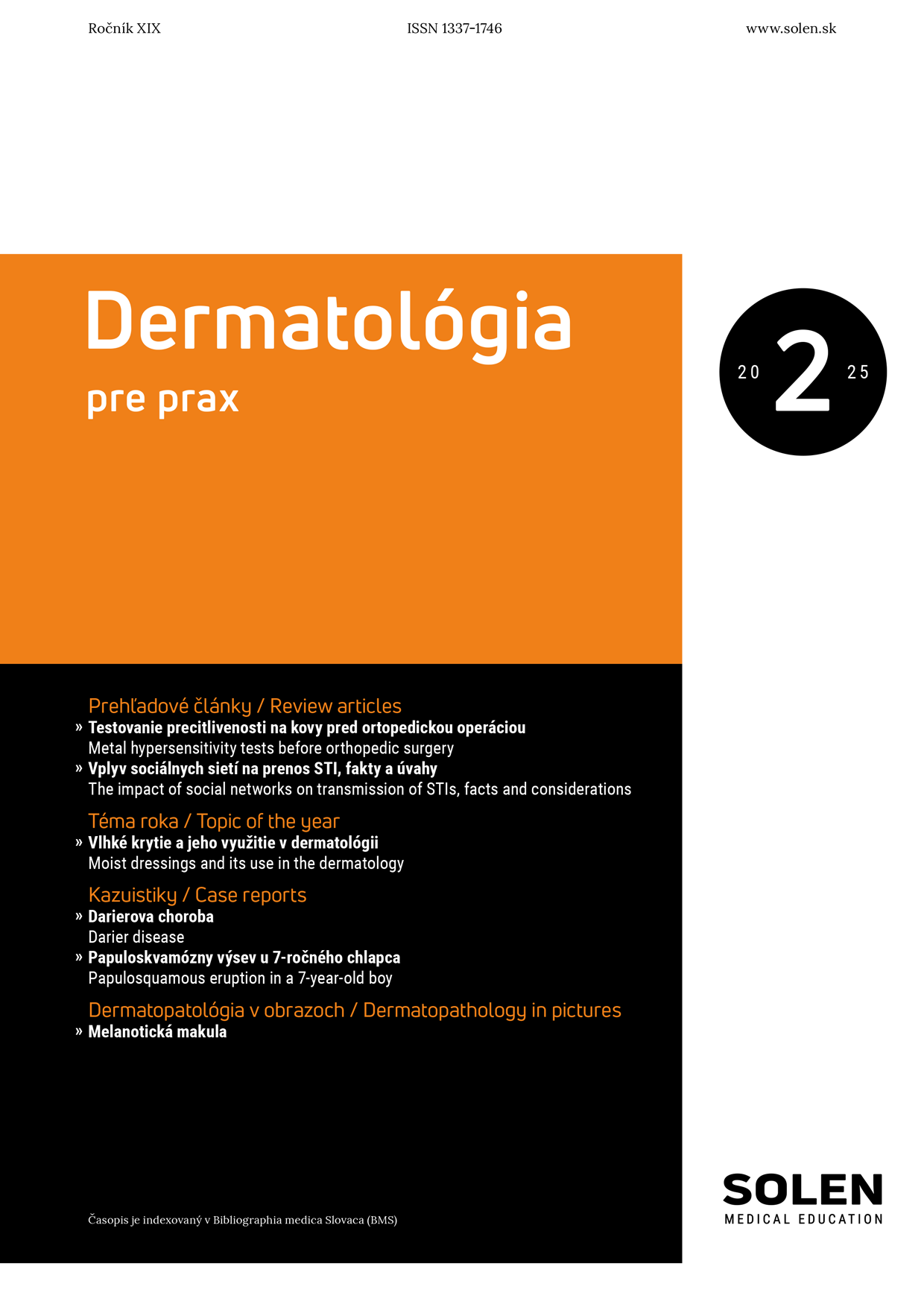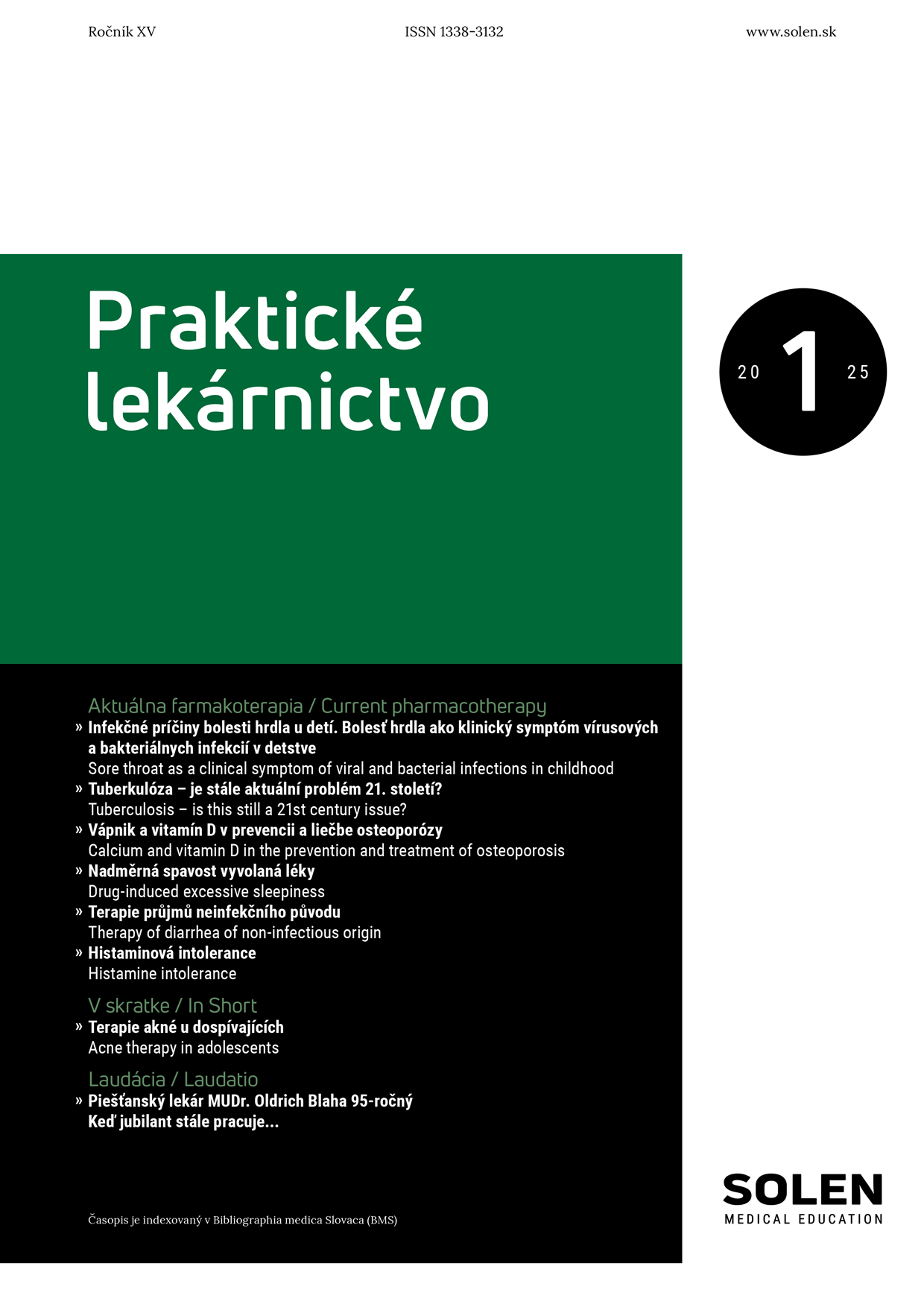Pediatria pre prax 2/2015
Vertigo u detí
doc. MUDr. Pavol Sýkora, CSc., MUDr. Lucia Švecová, MUDr. Gonzalo Ramos Rivera
Vertigo je jeden z najčastejších subjektívnych príznakov vôbec, a zároveň jedna z najčastejších príčin návštevy lekára. Vyskytuje sa menej často u detí ako u dospelých (8 – 14 % verzus 20 – 42 %), ale na druhej strane znamená mnohokrát väčší diagnostický problém pre lekárov. Základ v diagnostike vertiga je správne odobraná anamnéza. Prvým krokom by malo byť rozlíšenie pravého vestibulárneho vertiga od nepravého (instabilita, omámenosť, oscillopsia). Ďalej zistenie trvania spúšťacích faktorov ataku vertiga, výskytu sluchových príznakov a iných javov (vegetatívne symptómy, porucha vedomia, aura). Pri klinickom vyšetrení pacienta sa musíme zamerať na vestibulárny aparát. Okrem hodnotenia nystagmu a vyšetrenia tonických odchýlok pomocou Unterbergerovho a Hautantovho testu nesmieme zabudnúť na pulzný test hlavy a na Dixov-Hallpikov test, ktoré majú vysokú špecificitu v diagnostike periférneho vestibulárneho syndrómu, respektíve benígneho polohového paroxyzmálneho vertiga. V rámci paraklinických vyšetrení by malo byť v prípade vestibulárneho vertiga zrealizované ORL vyšetrenie vrátane tympanometrie a audiometrie. Neurozobrazovacie vyšetrenia sú indikované pri centrálnom vestibulárnom syndróme, eventuálne pri nejasnom klinickom obraze. Podrobné vestibulárne vyšetrenie a ENG nám pomáhajú lepšie charakterizovať vertigo. Liečba akútneho vertiga spočíva v podávaní antiemetík a antivertiginóz. Podporná liečba a pokoj na lôžku sú takisto potrebné.
Kľúčové slová: vertigo, závrat, vestibulárny syndróm, migréna, diferenciálna diagnostika.
Vertigo in children
Vertigo is one of the most common subjective symptoms and one of the most frequent reasons of visiting a physician. In comparison with adults, its incidence is lower in children (8 – 14 % versus 20 – 42 %), but, on the other hand, often represents a bigger diagnostic problem for the physicians. The basis of the management of vertigo is a good taken personal history. The first step should be differenciation of true from false vestibular vertigo (disequilibrium, lightheadness, oscillopsia). Other important information are the duration and triggers of attacks of vertigo, presence of auditory and other symptoms. During the physical examination we must focus in the vestibular system. Is necessary to examine not only tonic deviations with the Unterberger and Hautant test, but also the head-impulse test and the Dix-Hallpike test, which have a very high sensitivity for peripheral vestibular syndrome and benigne paroxysmal positional vertigo respectively. Patients with peripheral vestibular syndrome must have ORL examination including audiometry and tympanometry. Neuroimaging is indicated in the case of central vestibular syndrome and in unclear cases. Detailed vestibular examination and ENG are helpful in a better characterization of vertigo. The therapy of acute vertigo consists in administration of antiemetic and antivertigineous drugs. Support therapy and bed rest are also necessary.
Keywords: vertigo, dizziness, vestibular syndrome, migraine, differential diagnosis.


